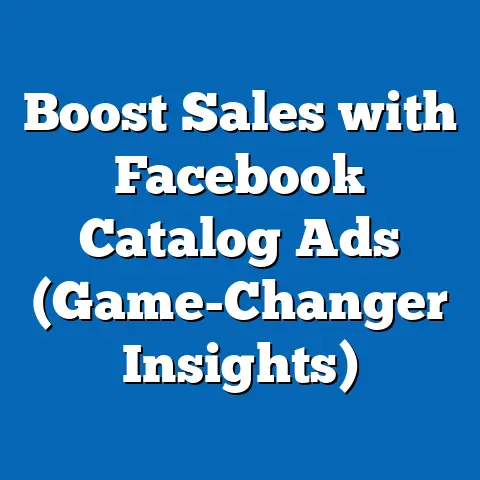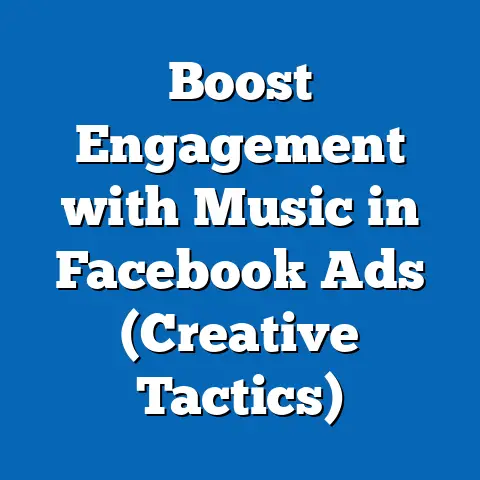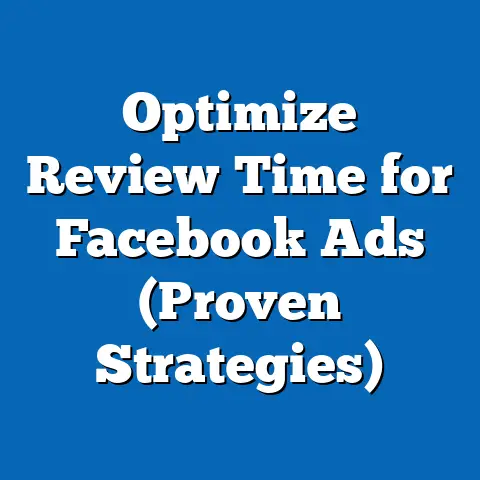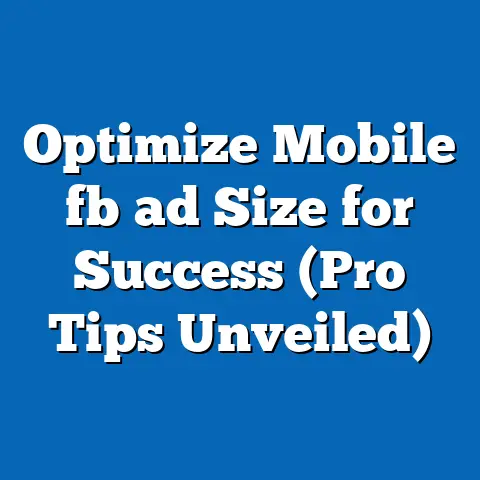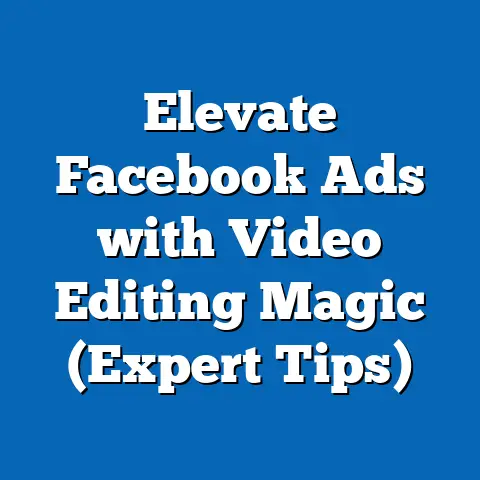Delete Facebook Ad Account with Ease (Pro Guide)
Have you ever felt overwhelmed by your Facebook ad account, perhaps considered just wiping the slate clean? I get it. I’ve been there, staring at campaign metrics that just weren’t moving in the right direction, feeling like I was throwing money into a black hole. The temptation to simply delete the whole thing and start over can be strong. But before you take that drastic step, let me tell you about a common mistake I see all the time.
Many users, frustrated or simply changing business direction, jump into deleting their Facebook ad account without fully understanding the consequences. They might be thinking, “It’s not working, let’s just get rid of it!” But deleting your ad account is like cutting the cord on years of hard work. You lose all your campaign data, audience insights, and ad creatives. It’s like erasing your marketing history.
I’ve seen businesses invest months, even years, building custom audiences and refining their ad strategies, only to lose it all in a hasty deletion. The emotional toll, not to mention the financial setback, can be significant. That’s why I’ve put together this guide. It’s not just about how to delete your ad account, but about why you should think carefully before doing so, and what steps to take to protect yourself. Let’s dive in.
Understanding Facebook Ad Accounts
A Facebook ad account is essentially your control panel for running ads on Facebook and Instagram. It’s the hub where you create campaigns, define your target audience, set your budget, design your ads, and track your performance. Think of it as your digital storefront on the world’s largest social media platform.
The structure of Facebook Ads Manager can seem a bit daunting at first. It’s organized into three main levels:
-
Campaigns: These represent your overall advertising goals. For example, you might have a campaign to increase website traffic, generate leads, or drive sales.
-
Ad Sets: Within each campaign, you create ad sets to target specific audiences, set your budget and schedule, and choose where your ads will appear. This is where you really hone in on who you want to reach.
-
Ads: These are the individual advertisements that people see. Each ad set can contain multiple ads, allowing you to test different creatives and messaging.
Campaigns: These represent your overall advertising goals. For example, you might have a campaign to increase website traffic, generate leads, or drive sales.
Ad Sets: Within each campaign, you create ad sets to target specific audiences, set your budget and schedule, and choose where your ads will appear. This is where you really hone in on who you want to reach.
Ads: These are the individual advertisements that people see. Each ad set can contain multiple ads, allowing you to test different creatives and messaging.
Now, why might someone consider deleting their ad account? There are a few common reasons:
-
Financial Constraints: Advertising costs can add up quickly, and if you’re not seeing a return on investment, you might feel like you need to cut your losses.
-
Lack of Results: Sometimes, despite your best efforts, your ads just aren’t performing as expected. This can be frustrating and lead you to believe that Facebook advertising isn’t right for your business.
-
Changes in Marketing Strategy: Your business goals and target audience can evolve over time, and you might decide that Facebook advertising no longer aligns with your overall marketing strategy.
-
Starting Fresh: I’ve also encountered businesses that want to completely rebrand and start from scratch. In this case, they might see deleting the old ad account as a way to wipe the slate clean.
Financial Constraints: Advertising costs can add up quickly, and if you’re not seeing a return on investment, you might feel like you need to cut your losses.
Lack of Results: Sometimes, despite your best efforts, your ads just aren’t performing as expected. This can be frustrating and lead you to believe that Facebook advertising isn’t right for your business.
Changes in Marketing Strategy: Your business goals and target audience can evolve over time, and you might decide that Facebook advertising no longer aligns with your overall marketing strategy.
Starting Fresh: I’ve also encountered businesses that want to completely rebrand and start from scratch. In this case, they might see deleting the old ad account as a way to wipe the slate clean.
Key Takeaway: Your Facebook ad account is a valuable asset, containing years of data and insights. Understanding its structure and the reasons for deletion is crucial before making a final decision.
Preparing for Deletion
Before you even think about clicking that “delete” button, there are some crucial steps you need to take. Deleting your ad account is a permanent action, so preparation is key. I can’t stress this enough.
First and foremost, review your past campaigns. Take a good look at what worked and what didn’t. Which audiences responded best to your ads? Which ad creatives generated the most clicks and conversions? This information is invaluable, even if you’re planning to start over.
Next, download performance reports. Facebook Ads Manager provides a wealth of data on your ad performance, including impressions, clicks, conversions, and cost per acquisition. Download these reports and save them in a safe place. You never know when you might need to reference them in the future. I typically download reports in CSV format, so I can easily manipulate the data in a spreadsheet.
One of the most important steps is to back up your important data. This includes your ad creatives (images, videos, and copy), audience insights, and any custom audiences you’ve created. Custom audiences, in particular, are a goldmine of information. These are audiences you’ve built based on your existing customer data, website visitors, or engagement on Facebook. Losing these audiences means losing a direct line to your most valuable prospects.
To access the Ads Manager and locate the account settings for deletion, follow these steps:
- Log in to your Facebook account. Make sure you’re logged in with the profile that has administrator access to the ad account.
- Navigate to Ads Manager. You can do this by clicking on the “Ads Manager” link in the left-hand menu or by going directly to https://www.facebook.com/adsmanager/.
- Select the correct ad account. If you have multiple ad accounts, make sure you’ve selected the one you want to delete. You can do this by clicking on the account selector in the top left corner.
- Go to Account Settings. Once you’re in the correct ad account, click on the “Settings” icon in the left-hand menu. This will take you to the account settings page.
Key Takeaway: Deletion is permanent. Back up all your valuable data, including campaign reports, ad creatives, and custom audiences, before proceeding.
How to Delete Your Facebook Ad Account
Okay, so you’ve weighed your options, backed up your data, and you’re still determined to delete your Facebook ad account. Here’s a step-by-step guide on how to do it:
- Log into Facebook Ads Manager: As mentioned earlier, make sure you’re logged in with the profile that has administrator access to the ad account.
- Navigate to the settings menu: Once you’re in Ads Manager, click on the “Settings” icon in the left-hand menu.
- Choose the correct ad account to delete: If you have multiple ad accounts, double-check that you’ve selected the right one. This is a critical step, as deleting the wrong account can have serious consequences.
- Locate the “Ad Account Status” section: Scroll down the Account Settings page until you find the “Ad Account Status” section.
- Click “Deactivate Ad Account”: In this section, you’ll see an option to “Deactivate Ad Account.” Click on this button.
- Confirm the Deactivation: Facebook will ask you to confirm that you want to deactivate the ad account. It will also ask you to provide a reason for deactivating. Choose the reason that best applies to your situation.
- Click “Deactivate Account”: Finally, click the “Deactivate Account” button to complete the process.
Important Note: Facebook may require you to enter your password to confirm the deactivation. This is a security measure to prevent unauthorized account deletions.
Here’s a visual representation of the process:
(Imagine screenshots here showing each step of the process in Facebook Ads Manager)
- Screenshot 1: Ads Manager dashboard, highlighting the “Settings” icon.
- Screenshot 2: Account Settings page, highlighting the “Ad Account Status” section.
- Screenshot 3: The “Deactivate Ad Account” button.
- Screenshot 4: The confirmation prompt, asking for a reason for deactivation.
Key Takeaway: Follow these steps carefully to ensure you’re deleting the correct ad account and to avoid any unexpected issues.
What Happens After Deletion?
Once you’ve deleted your Facebook ad account, there are several consequences to be aware of:
-
Loss of All Associated Data: This is the biggest one. All your campaign data, audience insights, ad creatives, and custom audiences will be permanently deleted. There’s no going back.
-
Inability to Access Past Campaigns: You won’t be able to access your past campaigns or any of the data associated with them. This means you won’t be able to analyze your past performance or use your historical data to inform future campaigns.
-
Ads Stop Running: Obviously, all your active ads will immediately stop running.
-
Billing Issues: If you have any outstanding charges on your ad account, you’ll need to settle them before the deletion can be fully processed. Facebook will typically send you an invoice for any remaining balance.
Loss of All Associated Data: This is the biggest one. All your campaign data, audience insights, ad creatives, and custom audiences will be permanently deleted. There’s no going back.
Inability to Access Past Campaigns: You won’t be able to access your past campaigns or any of the data associated with them. This means you won’t be able to analyze your past performance or use your historical data to inform future campaigns.
Ads Stop Running: Obviously, all your active ads will immediately stop running.
Billing Issues: If you have any outstanding charges on your ad account, you’ll need to settle them before the deletion can be fully processed. Facebook will typically send you an invoice for any remaining balance.
The time it takes for the deletion to process can vary, but it typically takes a few days. During this time, your ad account will be in a “deactivated” state. You can check the status of your deletion by going to the Account Settings page in Ads Manager.
Now, what if you change your mind after deletion? This is where things get tricky. In most cases, recovering a deleted ad account is not possible. Once the deletion is fully processed, the data is gone for good. However, there are some rare exceptions. If you deleted your ad account by mistake or if you believe it was deleted without your authorization, you can contact Facebook support and explain your situation. They may be able to help you recover your account, but there’s no guarantee.
I had a client once who accidentally deleted their ad account while trying to troubleshoot a billing issue. They panicked and immediately contacted Facebook support. After several days of back-and-forth communication, Facebook was able to recover the account, but it was a stressful experience.
Key Takeaway: Deletion is generally irreversible. Think long and hard before taking this step. If you do change your mind, contact Facebook support immediately, but be aware that recovery is not guaranteed.
Alternatives to Deletion
Before you pull the plug on your Facebook ad account, consider some alternatives to outright deletion. Sometimes, a less drastic approach can be the better option.
-
Pausing the Ad Account: Instead of deleting your account, you can simply pause it. This will stop all your ads from running, but it will preserve all your data and settings. You can then reactivate the account at any time in the future. This is a good option if you’re temporarily pausing your advertising efforts due to budget constraints or changes in your marketing strategy.
-
Adjusting Settings to Minimize Costs: If you’re concerned about overspending, you can adjust your budget and bidding settings to minimize your costs. For example, you can set a daily budget limit or use manual bidding to control how much you’re willing to pay for each click or impression.
-
Temporarily Disabling the Ad Account: This is similar to pausing the account, but it takes things a step further. When you temporarily disable your ad account, it’s no longer visible in Ads Manager. This can be helpful if you want to declutter your Ads Manager or if you’re concerned about unauthorized access to your account. You can re-enable the account at any time.
Pausing the Ad Account: Instead of deleting your account, you can simply pause it. This will stop all your ads from running, but it will preserve all your data and settings. You can then reactivate the account at any time in the future. This is a good option if you’re temporarily pausing your advertising efforts due to budget constraints or changes in your marketing strategy.
Adjusting Settings to Minimize Costs: If you’re concerned about overspending, you can adjust your budget and bidding settings to minimize your costs. For example, you can set a daily budget limit or use manual bidding to control how much you’re willing to pay for each click or impression.
Temporarily Disabling the Ad Account: This is similar to pausing the account, but it takes things a step further. When you temporarily disable your ad account, it’s no longer visible in Ads Manager. This can be helpful if you want to declutter your Ads Manager or if you’re concerned about unauthorized access to your account. You can re-enable the account at any time.
The benefits of these alternatives are clear:
-
Preservation of Data: You retain all your valuable campaign data and insights.
-
Flexibility: You can easily reactivate your account or adjust your settings as needed.
-
Avoidance of Permanent Loss: You don’t risk losing your account permanently.
Preservation of Data: You retain all your valuable campaign data and insights.
Flexibility: You can easily reactivate your account or adjust your settings as needed.
Avoidance of Permanent Loss: You don’t risk losing your account permanently.
I often advise clients to explore these alternatives before considering deletion. It’s always better to have the option to reactivate your account than to lose it forever.
Key Takeaway: Explore alternatives like pausing or temporarily disabling your ad account before resorting to deletion. These options allow you to preserve your data and maintain flexibility.
Conclusion
Deleting your Facebook ad account is a significant decision with potentially far-reaching consequences. It’s not something to be taken lightly. I’ve seen firsthand the frustration and regret that can result from a hasty deletion.
In this guide, I’ve walked you through the process of deleting your ad account, but more importantly, I’ve emphasized the importance of careful consideration and preparation. Remember these key points:
- Understand the Structure of Your Ad Account: Know what you’re deleting and what data you’ll be losing.
- Back Up Your Data: Download your campaign reports, ad creatives, and custom audiences.
- Follow the Deletion Steps Carefully: Ensure you’re deleting the correct account.
- Be Aware of the Consequences: Understand the loss of data and inability to access past campaigns.
- Consider Alternatives: Explore options like pausing or temporarily disabling your account.
Ultimately, the decision to delete your Facebook ad account is yours. But I hope this guide has provided you with the information you need to make an informed decision and to ensure a smooth deletion process if you choose to proceed.
Key Takeaway: Think carefully, prepare thoroughly, and consider alternatives before deleting your Facebook ad account.
Call to Action:
Have you ever deleted your Facebook ad account? What was your experience like? Share your thoughts and questions in the comments below! And if you found this guide helpful, be sure to follow my blog and social media channels for more tips and insights on navigating the world of Facebook advertising. Let’s learn and grow together!

